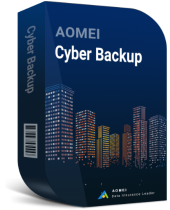[Beginner’s Guide] How to Connect vCenter to ESXi Host
If you want to manage your multiple VMware ESXi hosts and a large number of virtual machines, the official centralized management tool vCenter Server is what you need exactly. Next, this article will show you how to connect vCenter to ESXi host step-by-step.
What is VMware vCenter Server
If you want an efficient tool to manage your multiple VMware ESXi hosts and a large amount of virtual machines, VMware vCenter Server is exactly what you need.
VMware vCenter Server is an official advanced server management software that provides a centralized platform for controlling your VMware vSphere environments, allowing you to automate and deliver a virtual infrastructure across the hybrid cloud.
The vCenter Server architecture consists of the following components:
- vSphere Client and vSphere Web Client: used to manage your vCenter Server.
- vCenter Server Database: stores the inventory items, security roles, resource pools, performance data, and other information. Support Oracle, and Microsoft SQL Server databases.
- vCenter Single Sign-On (SSO): allows authentication against multiple user repositories, such as Active Directory or Open LDAP.
- Managed hosts: ESXi hosts and their respective virtual machines.
A single vCenter Server instance can support a maximum of 1,000 hosts, 10,000 powered-on virtual machines and 15,000 registered virtual machines.
So, after you have successfully installed vCenter, how do you connect vCenter to ESXi host? Next, This article will show you the detailed steps to add ESXi host to vCenter Server.
How to connect vCenter to ESXi host step by step
To increase efficiency and use vSphere features such as High Availability or Fault Tolerance, ESXi hosts need to be added the vCenter Server inventory in order to create a vSphere environment. Before adding an ESXi host to the vCenter Server inventory, you must create at least one datacenter object. Next, this part will present you with the steps start from create a new datastore.
Let’s take vCenter Server 7.0 as an example.
☞ Steps to add ESXi host to vCenter:
1. Login to your vCenter Server by Administrator account, click Menu and select Home from the dropping menu.
2. Right-click on your vCenter Server and select New Datacenter…
Note: If you already created Datacenter/Cluster for the host, you can skip to Step 6.
3. Provide a Name for the new datacenter, and click OK to create.
4. Right-click on the Datacenter and select New Cluster…
5. Provide a Name and other configurations for the new cluster, click OK to create.
6. Right-click on the new cluster and select Add Hosts…
7. Follow the wizard, enter the Host name or IP address, User name and Password of the target VMware ESXi host root account, click NEXT to continue.
It may pop up a Security Alert, check the information and click OK to continue.
8. Check the Host Summary information and click NEXT to continue.
9. Review the information and click Finish to add ESXi host to vCenter Server.
Data protection management of multiple ESXi hosts
You may already know that it is necessary to perform image-based backup of large amounts of VMs managed by vCenter Server, however, vCenter Server does not provide the feature of virtual machine backup. And that makes backup software a commonly accepted choice.
Here I introduce you to a VMware backup software AOMEI Cyber Backup, it enables you to backup multiple VMs either managed by vCenter Server, or on a standalone ESXi host.
✦ Agentless Backup: create complete and independent image-level backup for VMware ESXi and Hyper-V VMs.
✦ Flexible vSphere Backup: batch backup large numbers of VMs managed by vCenter Server, or multiple VMs on a standalone ESXi host.
✦ Multiple Storage Destinations: backup to local drive, or network destinations like NAS.
✦ Automated Execution: create backup schedules to automate backups daily, weekly, monthly.
✦ Restore Entire VM: restore instant available VMs from any selected restore points to an original or new location.

- Free VMware & Hyper-V VMs protection.
- Agentless and automatic backup virtual machines.
- Fast VM recovery with minimal downtime.
4 Steps to batch backup VMs managed by vCenter Server
1. Bind Devices: Access to AOMEI Cyber Backup web client, navigate to Source Device > VMware > + Add VMware Device to Add vCenter or Standalone ESXi host. And then click … > Bind Device.
2. Create Backup Task: Navigate to Backup Task > + Create New Task, and select VMware ESXi Backup as the Backup Type.
3. Set the Task Name, Device, Target, Schedule and Cleanup as needed.
- Task Name: you can change the task name or use the default name with an ordinal.
- Device: batch select large numbers of VMs managed by vCenter Server for centralized backup.
- Target: select to back up to a local path, or to a network path like NAS.
- Schedule (optional): perform full, differential, or incremental backup, and automate execution according to the frequency you specified.
- Cleanup (optional): automatically delete the old backup copies that exceed the retention period you specified.
4. Run Backup: Now you can click Start Backup and select Add the schedule and start backup now, or Add the schedule only.
Created backup tasks will be listed and monitored separately for restoring, progress checking and schedule changing.
When restoring, you can also restore to new location to create a new VM in the same or another datastore/host directly from the backup, saving the trouble of re-configuring the new VM.
Summary
vCenter Server is the centralized management utility for VMware, and is used to manage virtual machines, multiple ESXi hosts, and all dependent components from a single centralized location. To help you successfully configure a vSphere environment, this article showed you a step-by-step guide of how to connect vCenter to ESXi host.
In addition, you can register multiple vCenter Servers against a single SSO server by enabling Enhanced Linked Mode (ELM). The vMotion feature allows you to migrate VM to another vCenter freely.






